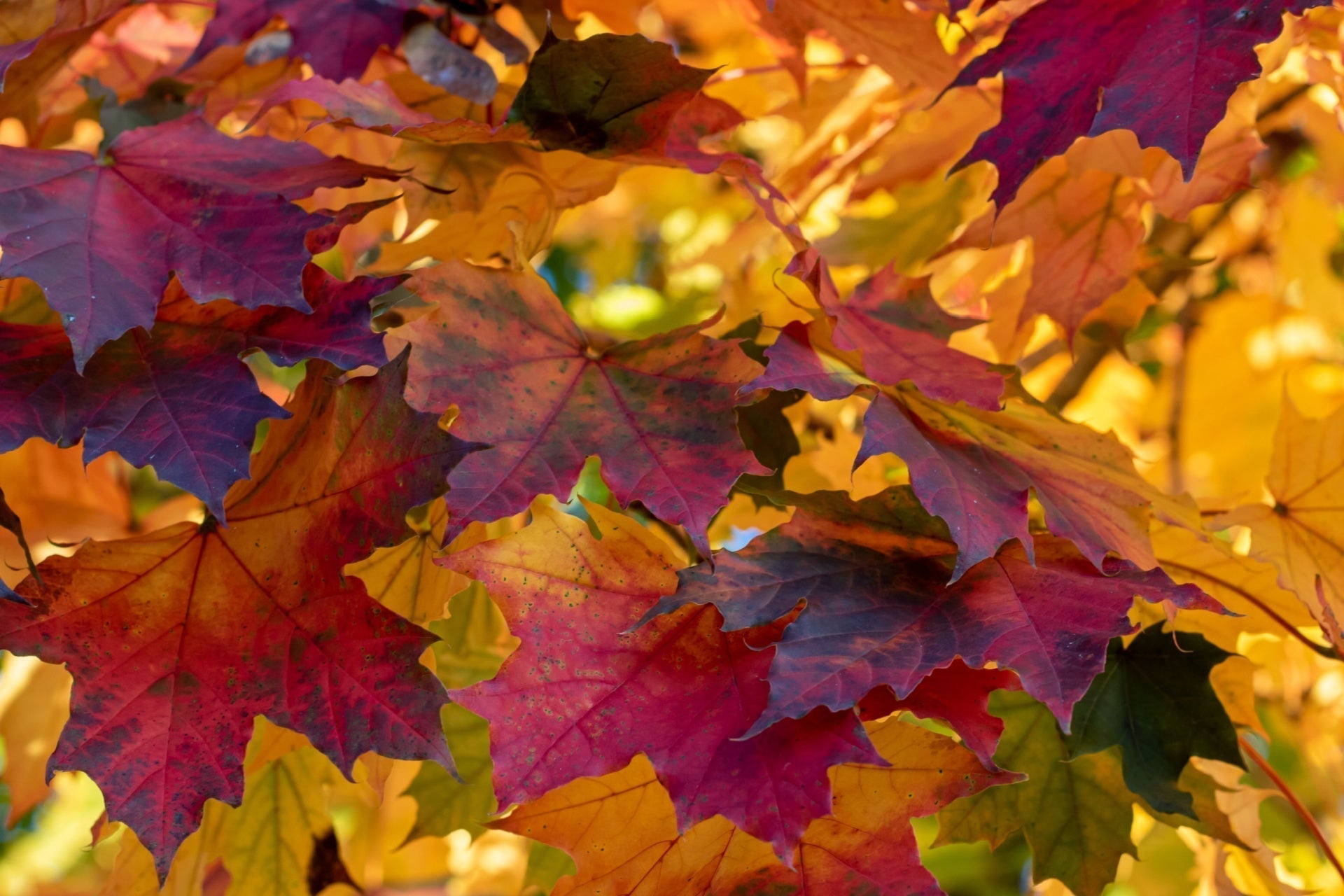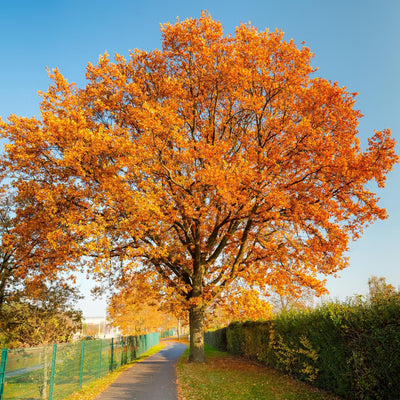Transforming Fall Leaves into "Compost Gold" for Next Spring's Garden
As the crisp air of fall settles in and trees shed their vibrant leaves, it’s easy to think of these leaves as something to rake, bag, and discard. But those fallen leaves are a gift in disguise—a natural resource that can be turned into nutrient-rich compost, sometimes called “compost gold.”
With a little effort, you can turn those autumn leaves into a valuable asset for your garden, ready to nourish next spring’s plants.
Buy Your Plants Direct From Grower 😎
Why Use Leaves for Compost? 🍃
Composting leaves is an excellent way to enrich your garden soil and support a thriving, sustainable ecosystem. There are several key advantages to using leaves as a core component of your compost pile. Leaves are packed with lost and lots of essential nutrients that are crucial for plants to thrive and grow. As trees draw up minerals and trace elements from deep within the soil, these nutrients become a major part of the fallen leaves.
When you compost leaves, you're essentially capturing and cycling those valuable nutrients back into your garden soil. The organic compost from decomposing leaves does wonders for soil structure and health.
As the leaves decompose slowly, they add humus to the soil, enhancing its texture and water-holding capacity. This develops an ideal environment for the new plant roots to grow under abundant moisture and nutrients.
Instead of throwing heaps of fallen leaves to a disposal truck, composting them allows you to turn that "waste" into a resourceful organic 'Compost' for your garden. This also reduces the strain on municipal waste systems and contributes to a more closed-loop, environmentally-friendly approach to gardening.
Different tree leaves offer varying nutrient profiles and decomposition rates. Mixing a variety of leaf types—from fast-breaking down maples to slower decomposing oaks—can help you build a well-balanced compost that provides a steady supply of organic matter and trace minerals. By incorporating leaves into your compost, you're not only nourishing your garden but also closing the loop on your landscaping waste. It's a simple yet highly effective way to create nutrient-rich soil that will support thriving, healthy plants.
Top Trees for Creating Nutrient-Rich Leaf Compost
Creating nutrient-rich leaf compost is an excellent way to enhance soil health and deliver vital nutrients to your garden. Some tree species are particularly valuable for this, as their leaves break down to create compost rich in organic matter, essential nutrients, and beneficial microorganisms. Here are some top choices for trees that contribute high-quality leaf litter for a nutrient-packed compost.
-

Maple Trees
Maple leaves are a popular choice for leaf compost due to their high nutrient content. They are particularly rich in calcium, magnesium, and potassium, making the resulting compost an excellent addition to gardens and landscapes. Maple leaves also break down relatively quickly, providing a quick release of essential nutrients.
-
Birch Trees
Birch leaves are another good choice as they are high in nitrogen content, which plays a vital role in supporting plant health and stability. Compost made from birch leaves also contains essential macronutrients (NPK) along with various micronutrients. These leaves decompose at a moderate pace, providing a consistent nutrient release to enrich the soil over time.
-

Oak Trees
Oak leaves are known for their high levels of lignin, a complex organic compound that takes longer to decompose. This slow decomposition process allows the leaves to release nutrients gradually, creating a compost that is nutrient-dense and long-lasting. Additionally, oak leaves tend to have a higher pH, making them suitable for acidic soil conditions.
-

Beech Trees
Beech trees produce leaves that are high in lignin and cellulose, which can contribute to the long-term fertility of the compost. The resulting compost is often rich in calcium, magnesium, and various trace elements, making it beneficial for a wide range of plants.
On the other hand, some tree leaves can take longer to break down or may have high tannin levels, which can slow decomposition. Oak, walnut, and eucalyptus leaves are best used in smaller amounts or composted separately until fully broken down. By understanding the properties of different tree leaves, gardeners can optimize their compost piles for optimal nutrient content and efficient decomposition.
Here's How to Start a Leaf Compost Pile
Begin by gathering the leaves in a designated spot in your yard. It’s best to chop or shred the leaves first; this helps them break down faster. If you have a lawn mower, run it over a pile of leaves to shred them easily. Shredded leaves will decompose more quickly, making the composting process more efficient. Once shredded, pile the leaves into a compost bin or a simple heap in a corner of your yard.
If you want to speed up the composting process, add some “greens” to the mix. Green materials like grass clippings, vegetable peels and leftovers, or coffee or tea grounds are filled with nitrogen that balances out the carbon-rich “browns” like dry leaves.
So the key is to create a balance of 'greens and browns'. Aim for a balance of about two parts brown to one part green. Every few weeks, turn the pile with a pitchfork to aerate it; this adds oxygen, which helps break down the materials.

Making Leaf Mold as an Alternative
If traditional composting seems too involved, consider making leaf mold instead. Leaf mold can be an ideal alternative to traditional compost when you’re looking for a simpler, low-maintenance way to enrich your soil without balancing green and brown materials.
It’s especially useful if you have a large quantity of leaves and limited access to nitrogen-rich “green” materials, like vegetable scraps or grass clippings, which traditional composting requires. Leaf mold is also perfect for gardeners focused on improving soil structure rather than adding heavy nutrients, as it primarily enhances moisture retention and aeration
Leaf mold is essentially decomposed leaves, and it’s very simple to make. Just pile your leaves in a corner, moisten them, and leave them to break down slowly. It might take a year or more, but the result is a crumbly, dark material that’s excellent for conditioning soil and retaining moisture. Leaf mold works well for plants like shrubs, trees, and perennials that appreciate well-draining, loamy soil.
Finding the Perfect Place for Compost
When setting up a compost pile in your backyard or garden, it's important to choose the right location. The ideal spot for a compost pile should have partial shade, good drainage, and be easily accessible but out of the way of high-traffic areas.
A spot with partial or indirect sunlight, such as under a tree or beside a wall, is preferable as it helps in a steady provision of necessary moisture levels for effective decomposition, avoiding any dried out areas in the pile. Ensuring the location has an efficient drainage system is also noteworthy to prevent the compost from becoming waterlogged, which will not only slow down the process but also stink out your backyard with unpleasant odors.

Positioning the compost pile in an accessible but slightly tucked-away area allows you to easily add food scraps and garden waste, while keeping it out of the way of main outdoor activities. Avoiding high-traffic zones helps minimize any potential issues with insects or mild odors. Finally, having a water source nearby makes it easier to maintain the proper moisture levels in the compost throughout the year.
Using Your Finished Compost
By spring, your composted leaves should be ready to use.Finished compost has a rich, earthy aroma and a dark, crumbly texture. This nutrient-dense material can be an excellent addition to your garden soil, enhancing its structure and fertility. Incorporating compost helps improve the soil's ability to retain moisture and nutrients, creating an optimal environment for plants to thrive.
Additionally, using compost as a top dressing or mix-in around young plants provides them with a concentrated boost of essential nutrients to support healthy growth in the seasons ahead. Your plants will grow on the natural nutrients, and you’ll be able to enjoy healthier plants and a colorful spring season in your garden.
Shred Leaves
Balance Greens
Turn Pile
Monitor Moisture
So next time fall rolls around, think twice before bagging up those leaves. With a bit of patience and care, you can transform autumn’s leaf pile into a garden treasure, enriching your soil for seasons to come.
Frequently Asked Questions
🌳How do I prepare the leaves for composting?
Chopping or shredding the leaves first helps them break down faster. You can do this by running the leaves through a lawn mower, an easy way to shred them.
🌳How long does it take for the leaves to break down into compost?
The decomposition rate varies depending on the type of leaves. Leaves with higher lignin content, such as oak and beech, take longer to decompose compared to faster-breaking down maple and birch leaves.
🌳Are there any types of leaves I should avoid using in my compost?
Some tree leaves, like oak, walnut, and eucalyptus, can take longer to break down or have high tannin levels, which can slow decomposition. You should use these leaves in smaller amounts or composting them separately until fully broken down.
🌳 Where is the best place to set up a compost bin or pile in my yard?
The ideal spot for a compost pile should have partial shade, good drainage, and be easily accessible but out of the way of high-traffic areas. A 3-by-3'ft space under a tree or beside a wall, is preferable





